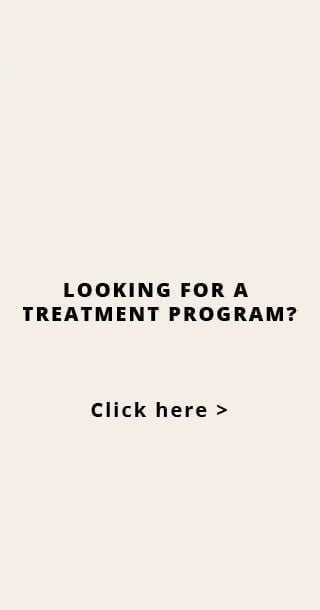Estimated reading time: 8 minute(s)
Hydrocodone is a powerful opioid medication primarily prescribed for managing moderate to severe pain. It belongs to a class of drugs known as narcotic analgesics and is commonly combined with other medications, such as acetaminophen, to enhance its effectiveness. Hydrocodone binds to opioid receptors in the brain and spinal cord, reducing pain perception.
One of the primary uses of Hydrocodone is in treating acute and chronic pain conditions. It is often prescribed to help alleviate pain and promote healing following surgeries, injuries, or medical procedures. Additionally, the medicine may be prescribed for individuals with chronic conditions, such as cancer, where pain relief is crucial for enhancing the quality of life.
While the medication can be highly effective in managing pain, getting off Hydrocodone may be difficult, especially after prolonged use. Due to its potent opioid properties, leaving the medication can cause withdrawal symptoms. Although the medicine affects each person differently, it is still advised to use it carefully and under the supervision of a licensed healthcare provider.
Hydrocodone For Pain Management – How Does It Work?
Hydrocodone is a highly effective pain reliever that binds to opioid receptors in the brain and spinal cord. Opioid receptors are found throughout the central nervous system, including the brain and spinal cord. These receptors regulate pain perception and other physiological processes such as mood, reward, and respiratory function. When Hydrocodone enters the body, it binds to these opioid receptors, specifically targeting the mu-opioid receptors.
By binding to the mu-opioid receptors, the medicine exerts its analgesic effects. The activation of these receptors inhibits the transmission of pain signals and alters the perception of pain in the brain. This results in pain relief and reduced discomfort experienced by the individual.
Besides its pain-relieving properties, Hydrocodone also affects other brain areas, including the limbic system, which is involved in emotions and reward. When the medication binds to mu-opioid receptors in these regions, it can produce feelings of euphoria and well-being.
In addition to its effects on pain perception and mood, the medicine also affects the respiratory system. Opioids like Hydrocodone can depress the activity of the respiratory centers in the brainstem, leading to slowed breathing. Respiratory depression can be dangerous, especially when high doses of Hydrocodone are consumed or when it is combined with other respiratory depressants, such as alcohol or benzodiazepines. Respiratory depression is the main cause of fatal overdoses involving opioids.
Hydrocodone is typically taken orally and is available in various formulations. It is often combined with other medications to enhance its pain-relieving effects. The combination products are commonly prescribed for acute or chronic pain management.
Once ingested, Hydrocodone is rapidly absorbed into the bloodstream from the gastrointestinal tract. From there, it is distributed throughout the body, including the central nervous system, where it binds to opioid receptors. The liver metabolizes the medicine into its active metabolite, hydromorphone, which also contributes to its analgesic effects.
The duration of Hydrocodone’s effects can vary depending on several factors, including the formulation, dosage, and individual metabolism. Short-acting formulations may provide pain relief for several hours, while extended-release formulations can provide around-the-clock relief for a longer duration.
Phases Of Hydrocodone Withdrawal
Hydrocodone can be challenging to stop using due to the withdrawal symptoms that can occur upon discontinuation. Hydrocodone withdrawal symptoms can vary from one person to another and depend on several factors. Some individuals may not experience little to no side effects, while others may find the process hard. Generally, you may experience the following phases in the hydrocodone withdrawal timeline:
Phase 1
The first phase of hydrocodone withdrawal is characterized by initial symptoms such as restlessness, anxiety, muscle aches, and insomnia and occurs within six to twelve hours. These symptoms may be accompanied by irritability, sweating, and increased heart rate. Cravings for Hydrocodone may also begin during this stage.
Phase 2
In phase 2, the peak of hydrocodone withdrawal usually occurs within the first few days of leaving the medication. Symptoms during this stage can be intense, including muscle and bone pain, gastrointestinal distress (nausea, vomiting, diarrhea), chills, sweating, dilated pupils, and flu-like symptoms. Psychological symptoms like anxiety, depression, and agitation may also be present.
Phase 3
After the peak, withdrawal symptoms gradually subside in the third phase. Physical symptoms may begin to lessen, although some may still experience residual pain, gastrointestinal discomfort, and fatigue. Psychological symptoms may also persist, and mood swings, depression, and anxiety may still be present.
Phase 4
Some people may experience post-acute withdrawal syndrome can for weeks or even months. The phase is characterized by intermittent waves of withdrawal symptoms that come and go. These symptoms can include anxiety, mood swings, cravings, sleep disturbances, and difficulty concentrating.
If you are wondering how to get off Hydrocodone and manage withdrawal symptoms, it is better to seek medical assistance. Healthcare professionals can provide guidance, prescribe medications to alleviate symptoms, and develop a tapering schedule to reduce the dosage of Hydrocodone gradually.
Hydrocodone Abuse – Warning Signs Of Addiction
Hydrocodone, as an opioid medication, carries a significant risk of addiction. Addiction refers to a compulsive and uncontrollable drug-seeking behavior despite negative consequences. Several factors contribute to the addictive potential of Hydrocodone.
One of the primary reasons Hydrocodone can lead to addiction is its ability to produce euphoria and well-being. When taken, Hydrocodone stimulates the release of dopamine in the brain, a neurotransmitter associated with pleasure and reward. The pleasurable effects can create a strong psychological attachment to the drug, leading individuals to seek the euphoric experience repeatedly.
Repeated medication use can also lead to tolerance, where higher doses are needed to achieve the same pain relief or euphoria. Tolerance can drive individuals to escalate their dosage or frequency of use, increasing the risk of addiction.
Several signs can indicate the development of an addiction to Hydrocodone. These signs may include:
- Increased drug cravings: Feeling a strong urge or desire to use Hydrocodone, even when not necessary for pain management.
- Loss of control: Being unable to control the amount or frequency of hydrocodone use, exceeding prescribed dosages, or continuing use despite negative consequences.
- Continued use despite negative effects: Persisting using Hydrocodone despite experiencing physical, psychological, or social problems related to its use, such as relationship issues, declining work or school performance, or financial difficulties.
- Withdrawal symptoms: Experiencing physical and psychological withdrawal symptoms when attempting to reduce or stop Hydrocodone. These symptoms may include restlessness, muscle and bone pain, insomnia, anxiety, nausea, vomiting, and diarrhea.
- Neglecting responsibilities: Prioritizing hydrocodone use over important responsibilities and obligations, such as work, school, or personal relationships.
- Social withdrawal: Isolating oneself from friends, family, or social activities in favor of using Hydrocodone or to avoid judgment about drug use.
- Doctor shopping or prescription forgery: Engaging in deceptive behaviors to obtain multiple prescriptions or finding ways to acquire Hydrocodone from different healthcare providers.
If you or someone you know is showing signs of hydrocodone addiction, seeking professional help by consulting with a healthcare professional or addiction specialist is crucial.
Hydrocodone Addiction Treatment – Joining A Rehabilitation Center
If you suspect you are developing hydrocodone dependence or abusing it, joining a rehab can be a crucial step towards recovery and breaking free from the cycle of addiction. Rehab centers provide individuals with comprehensive treatment to address their addiction and work towards long-term sobriety. The following is the general timeline of what happens during treatment at a rehab:
Professional Evaluation
Upon entering a rehab facility, individuals undergo a thorough assessment by medical professionals and addiction specialists. The evaluation helps determine the severity of the addiction, any co-occurring mental health disorders, and the most appropriate treatment approach.
Detoxification
For individuals with physical dependence on Hydrocodone, a medically supervised detoxification process may be necessary. During detox, the body is safely cleared of the drug while managing withdrawal symptoms under the supervision of healthcare professionals. Medications may be prescribed to alleviate withdrawal symptoms and promote comfort.
Individualized Treatment Plan
A personalized treatment plan is developed based on individual needs and goals. This plan may include a combination of therapies, counseling sessions, support groups, and holistic approaches to address addiction’s physical, psychological, and emotional aspects.
Therapy
Various therapeutic approaches, such as cognitive-behavioral therapy (CBT), motivational interviewing, and group therapy, are typically incorporated into the rehab program. These therapies aim to help individuals understand the underlying causes of their addiction, develop healthy coping mechanisms, and learn relapse prevention strategies.
Dual Diagnosis Treatment
Many individuals with hydrocodone addiction may also have underlying mental health issues, such as anxiety, depression, or trauma. Dual-diagnosis treatment simultaneously addresses both addiction and co-occurring mental health disorders, providing integrated care to promote overall recovery.
Peer Support
Rehab programs often incorporate support groups or 12-step programs that provide a sense of community, understanding, and shared experiences, allowing individuals to connect with others who have faced similar challenges.
Aftercare Planning
A comprehensive rehab program should include a strong focus on aftercare planning to support individuals in maintaining their sobriety after leaving the facility. It may involve outpatient therapy, ongoing counseling, sober living arrangements, or participation in recovery support groups.
By joining a rehab program for hydrocodone abuse, individuals can expect professional support, evidence-based treatment interventions, and a welcoming environment to facilitate lasting recovery. It is crucial to approach rehab with an open mind, a willingness to engage in the treatment process, and a commitment to making positive changes for a drug-free life.
FAQs
Can Hydrocodone interact with other medications?
Hydrocodone can interact with other medications, including prescription, over-the-counter, and herbal supplements. It is essential to inform your healthcare provider about all the medications and supplements you are currently taking to avoid potential drug interactions.
How long does it take to detox from Hydrocodone?
The duration of hydrocodone detoxification can vary depending on several factors, including the individual’s level of dependence and overall health. Typically, hydrocodone detox lasts around 5 to 7 days. However, the process may be longer for individuals with more severe addiction or if there are complications during detox.
Can I quit Hydrocodone cold turkey?
While it is possible to quit hydrocodone cold turkey, it is generally not recommended due to the potential for severe withdrawal symptoms and the increased likelihood of relapse. Abruptly discontinuing the medicine can lead to intense withdrawal symptoms. It is best to consult a healthcare professional or addiction specialist to develop a safe and effective tapering plan to reduce the dosage and minimize withdrawal symptoms gradually.


